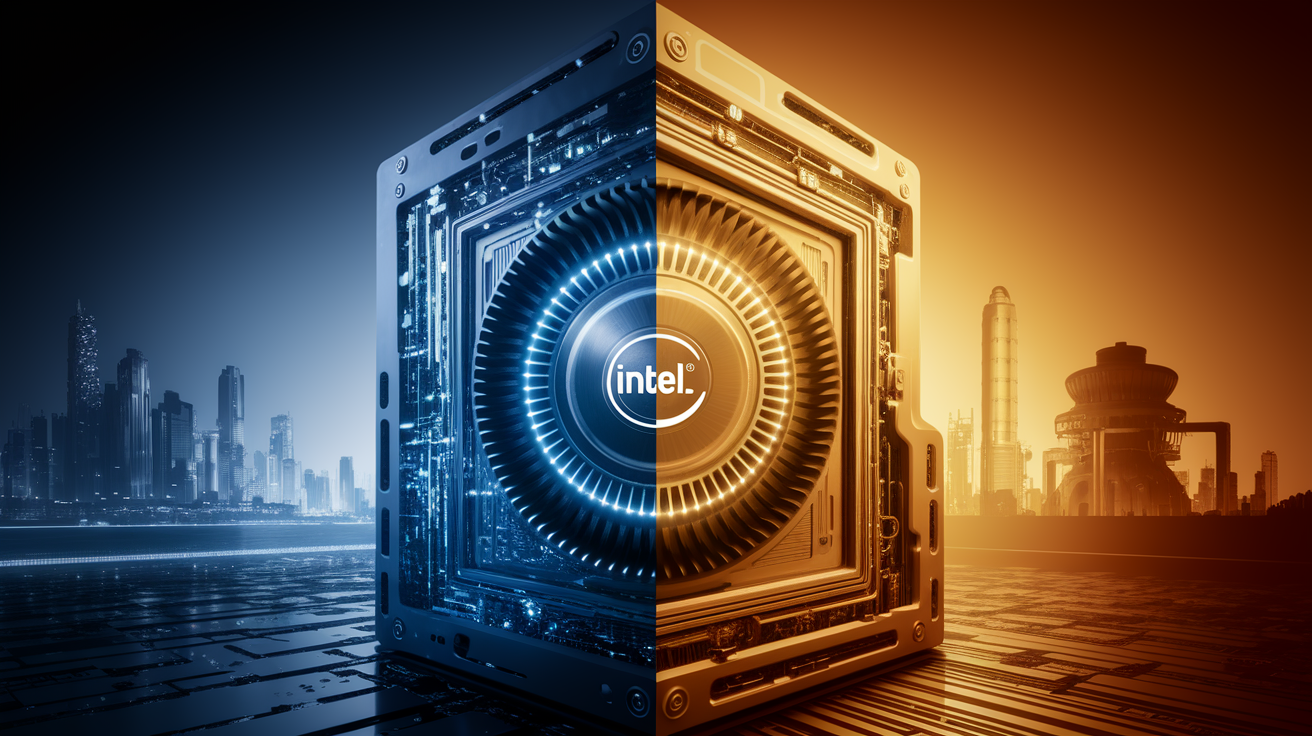The AI chip market is developing rapidly and is a battleground where Nvidia and Intel compete for supremacy. Nvidia has a clear advantage due to its powerful graphics processors, while Intel, despite its strength in other areas of the semiconductor industry, struggles to make headway in the AI segment. This article outlines the technological and market leadership strategies of both companies and analyzes the challenges and future prospects they face.
Strategic Masterclass: How Nvidia and Intel Are Shaping the AI Chip Market

In the AI chip segment, Nvidia and Intel are taking very different paths, and it is essential to analyze their technological and leadership strategies to understand how they are securing and expanding their positions.
Nvidia has established itself as the undisputed market leader, particularly due to its unwavering commitment to high-performance graphics processors, which form the backbone of modern AI applications. The development of new chip models like the ‘Blackwell Ultra’ demonstrates Nvidia’s constant focus on increasingly powerful chips. These are supported by cutting-edge technological platforms, promising efficiency gains. Nvidia goes far beyond chip development, positioning processing centers as “AI factories,” essential hubs for the advancement of artificial intelligence.
In terms of market leadership strategies, Nvidia has built an almost insurmountable network of partnerships and collaborations. From tech giants to innovative startups in the AI field, numerous companies utilize Nvidia’s chips. Moreover, there is strategic expansion into new market segments: while the company has traditionally been strong in AI training, inference is gaining attention, allowing Nvidia to further extend its influence.
On the other hand, Intel faces far greater challenges. Although historically the company has been a dominant force in the CPU market, the AI chip sector represents a different arena. With the ambitious 18A process, Intel is trying to climb back to the top. This process symbolizes Intel’s technological strategy of redefining cutting-edge manufacturing processes and thus regaining a competitive advantage.
At the same time, Intel is leveraging made-to-order production, increasing partnerships with tech giants like Microsoft and Amazon, who trust in the potential of the 18A process. These alliances could be the key to restoring a leading market position and show a clear path toward diversification.
Ultimately, the strategies of both companies reflect the dynamics of a rapidly evolving market. Nvidia’s innovation clashes with Intel’s ambitious race: a contest that could significantly influence the entire AI chip market.
Nvidia and Intel: Challenges and Prospects in the Dynamic AI Chip Market

The AI chip market has established itself as a dynamic key segment within the semiconductor industry. Both Nvidia and Intel are facing complex challenges along with fascinating future prospects. Nvidia has gained a strong market position but is under constant competitive pressure. With an impressive market share of over 80% in the graphics card sector, Nvidia dominates AI development. However, even for a market leader like Nvidia, there are challenges. Competitive pressure from companies like AMD, as well as cloud providers developing their own AI chips, is increasing. This competition can lead to price pressure and a slowdown in the growth that has been recorded so far.
Another important aspect is technological changes. The trend toward smaller and less resource-intensive language models could affect the demand for the powerful GPUs that have so far favored Nvidia’s growth. Additionally, geopolitical risks such as US trade restrictions pose a threat to Nvidia’s revenues in Asia. Despite these obstacles, Nvidia’s future remains bright. The strong focus on innovation and diversification, for example through the RTX Blackwell family, opens new market opportunities in niche segments like robotics and automotive AI. Moreover, strategic collaborations with tech giants such as Microsoft and Amazon and a vast ecosystem of developers further consolidate Nvidia’s position.
On the other hand, Intel is facing significant challenges. While Intel continues to dominate the PC and server segment, it appears weaker in the AI chip market. A fundamental reason for this is manufacturing issues and delays in process technology compared to competitors like TSMC. This deficit weakens Intel’s ability to produce competitive AI chips and heavily impacts its business in data centers. Additionally, Intel is losing market share in the PC segment to AMD, and the growing prevalence of ARM-based chips represents a long-term threat to x86 dominance.
However, there is also a glimmer of hope on the horizon. The appointment of Lip-Bu Tan as CEO could mark a strategic turnaround, especially in the areas of manufacturing and AI initiatives. Intel’s massive investments in increasing its production capabilities promise an improvement in long-term competitiveness. Geopolitical developments and the trend toward domestic semiconductor production could prove advantageous for Intel. In summary, while Nvidia aims to defend its market leadership through continuous innovation, Intel must keep pace with strategic adjustments and investments to establish itself in the fast-growing AI chip market.